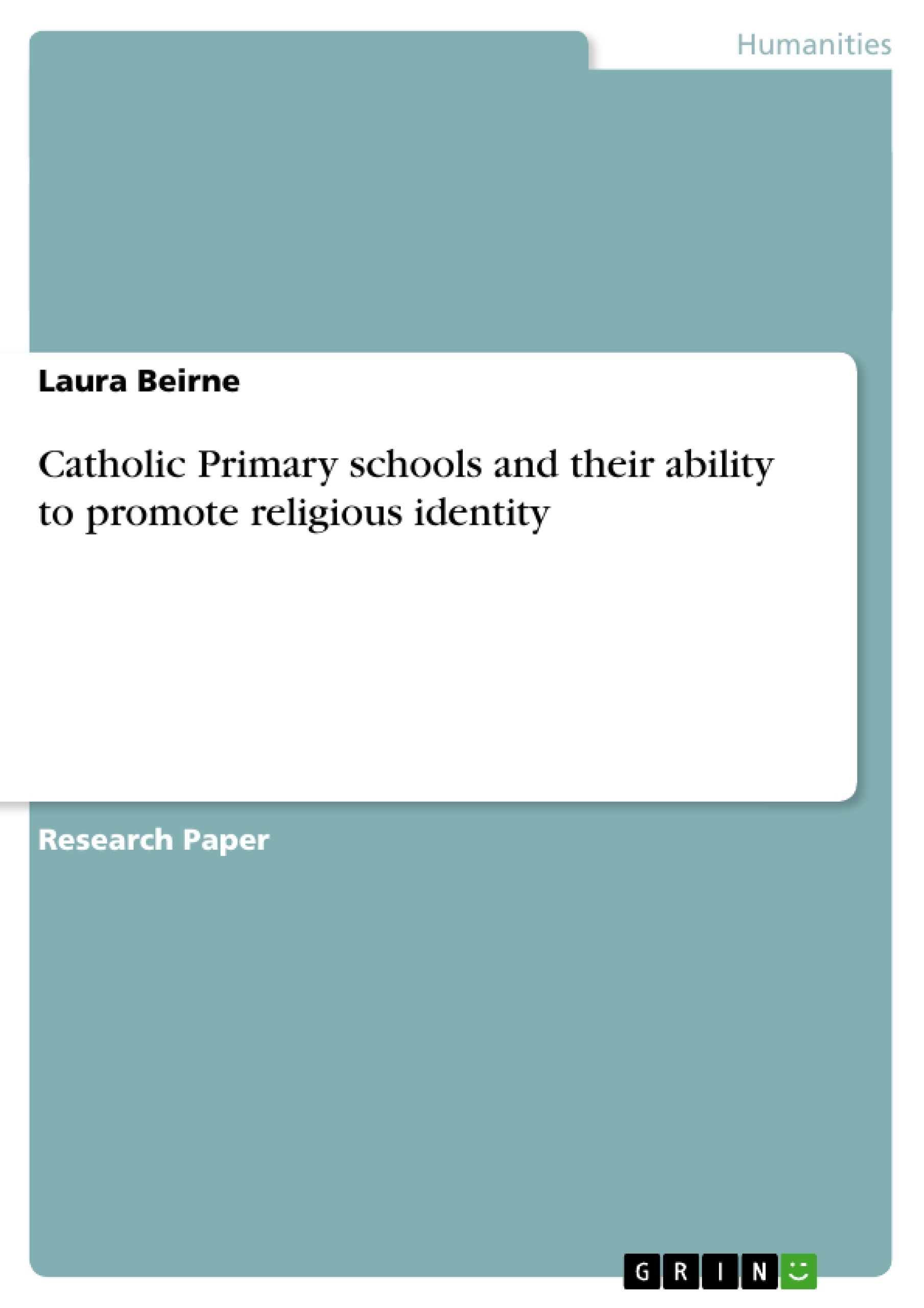In England levels of religious practice are rapidly declining. this raises the question of how we are able to promote religious identity across England. This paper explores the religious identity in Catholic primary school in England. this research project found that children that attend Catholic school, despite the religious ethos, are usually unaware of their religious identity and what being a Catholic means.
Inhaltsverzeichnis (Table of Contents)
- Introduction
- Literature review
Zielsetzung und Themenschwerpunkte (Objectives and Key Themes)
The primary objective of this research is to investigate whether or not Catholic primary schools can promote the religious identity of their students. This study aims to explore the effects of a Catholic school environment on student identity, specifically in relation to religious beliefs and practices.
- The construction and development of religious identity in children
- The role of social environment and socialization in shaping identity
- The influence of faith schools on religious values and identity formation
- The potential of Catholic schools to nurture and preserve religious identity
- The importance of religious community and belonging in fostering religious identity
Zusammenfassung der Kapitel (Chapter Summaries)
Introduction
This chapter introduces the research topic of religious identity in the context of declining religious practice in the United Kingdom. It outlines the study's focus on investigating the potential of Catholic primary schools to promote religious identity among their students.
Literature review
This chapter delves into the concept of religious identity and explores various theories and research findings related to its construction and development. The chapter examines the impact of social environment and socialization on identity formation, focusing specifically on the influence of faith schools.
The chapter analyzes existing studies on children's understanding of religious identity, highlighting the findings of Elkind and Goldman. It also explores the significance of the Teenage Religion and Values Survey (TRVS) and its implications for understanding the role of faith schools in shaping religious values and identity.
The chapter concludes by discussing the importance of religious community and belonging in fostering religious identity, drawing on research by Casson, Ofsted, and Engebretson.
Schlüsselwörter (Keywords)
This research focuses on the themes of religious identity, Catholic primary schools, social environment, socialization, religious values, faith schools, religious community, and belonging.
- Quote paper
- Laura Beirne (Author), 2013, Catholic Primary schools and their ability to promote religious identity, Munich, GRIN Verlag, https://www.grin.com/document/212091



